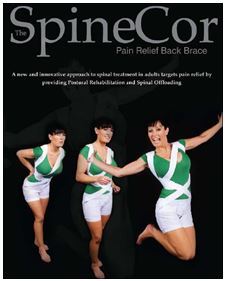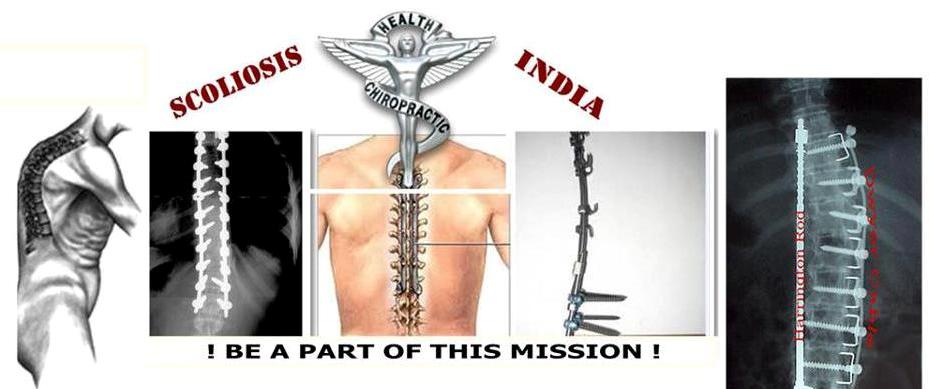Here are 10 studies published and presented in the past five years on cost-effectiveness of spine surgery.

Spinal Deformity: Dr. Richard Hostin. Published in May 2013, this article in
Spine Deformity: The Official Journal of the Scoliosis Research Society
includes several co-authors and the International Spine Study Group.
The authors aimed to calculate the cost of improvement in health-related
quality of life by examining consecutive patients with adult spinal
deformity in a single center over a five year period: 2005 to 2010. They
collected costs from hospital data on total costs incurred during the
episode of care and found that cost-effectiveness ranged from an average
of $5,658 per 1-point improvement in the SRS Self-image to an average
cost of $25,918 per 1-point improvement in the SF-36 Physical Component
Score. There were 164 patients examined in the study with an average of
3.2 years follow-up. Authors concluded surgical treatment for adult
spinal deformity could be more cost effective for select proposes like
pain reduction and less cost-effective for other purposes, such as
improved functional activity.
Intervertebral disc herniation: SPORT. Jon D. Lurie, MD, Gunnar B. Andersson, MD, Sigurd Berven, MD, James Weinstein, DO, were co-authors on this article.
As part of the Spine Patient Outcomes Research Trial, these surgeons
and research partners examined the cost-effectiveness of surgical versus
nonoperative treatment for lumbar disc herniation over a two-year
period. The researchers examined 775 patients who underwent surgery and
416 who underwent nonoperative treatment for intervertebral disc
herniation and found the average difference in QALYs over the two-years
after treatment was 0.21 in favor of surgery. Surgery was more costly
than nonoperative care — $14,137 more expensive for adult surgery and
$34,355 for Medicare populations. The estimated economic value of
surgery varied considerably, according to the study authors, but overall
found surgery moderately cost-effective.
Spinal stenosis: SPORT. Published in a 2011 Issue of Spine and reported in Medscape, this article examined
cost-effectiveness of spinal stenosis and two other disorders as part
of the Spine Patient Outcome Research Trial. The patients were followed
for two years and researchers calculated cost per quality-adjusted life
year gained in 2004 US dollars, comparing that number to nonoperative
care using a societal perspective with costs and QALYs discounted at 3
percent per year. Surgery was performed initially or over a four-year
period for 414 of the 634 patients for spinal stenosis. QALY gained for
spinal stenosis patients was 0.22 and costs per QALY gained decreased
for spinal stenosis from $77,600 at two years to $59,400 at four years.
The study authors include Jon D. Lurie, MD, Gunnar B. Andersson, MD,
Sigurd Berven, MD, James Weinstein, DO, Harry Herkowitz, MD, Todd
Albert, MD, Keith Bridwell, MD, and other non-physician authors.
Degenerative spondylolisthesis: SPORT. Published in a 2011 Issue of Spine and reported in Medscape, this article examined
cost-effectiveness of surgical treatment for degenerative
spondylolisthesis and two other disorders as part of the Spine Patient
Outcome Research Trial. The patients were followed for two years and
researchers calculated cost per quality-adjusted life year gained in
2004 US dollars, comparing that number to nonoperative care using a
societal perspective, with costs and QALYs discounted at 3 percent per
year. Surgery was performed initially or over a four-year period for 391
of the 601 patients for degenerative spondylolisthesis. QALY gained for
degenerative spondylolisthesis patients was 0.34 and costs per QALY
gained decreased for degenerative spondylolisthesis from $115,600 at two
years to $64,300 at four years. The study authors include Jon D. Lurie,
MD, Gunnar B. Andersson, MD, Sigurd Berven, MD, James Weinstein, DO,
Harry Herkowitz, MD, Todd Albert, MD, Keith Bridwell, MD, and other
non-physician authors.
Outpatient cervical disc arthroplasty: Dr. Richard Wohns. Richard Wohns, MD, founder of NeoSpine in the Puget Sound Area, Wash., published an article describing
the cost-effectiveness of outpatient cervical disc arthroplasty in
Surgical Neurology International in 2010. The article reviewed 26
patients who underwent outpatient cervical disc arthroplasty and found
100 percent of patients improved after the surgery and no postoperative
complications. The cost of outpatient single-level cervical disc
arthroplasty was 62 percent less than outpatient single-level cervical
anterior discectomy with fusion using allograft and plate. The
arthroplasty procedure cost 84 percent less than inpatient single-level
cervical disc arthroplasty.
Posterior spinal fusion compared to hip and knee arthroplasty: Sonoran Spine Research and Education Foundation. In 2012, researchers and surgeons at the Sonoran Spine Research and Education Foundation in Mesa, Ariz., published an article
online examining the cost-effectiveness and outcomes for spinal fusion
and joint replacement patients. The study used a Markov model of 1,000
patients for the three cohorts: spinal fusion, knee replacement and hip
replacement. The cost of revision surgery was neglected. Researchers
found the total hip arthroplasty group had a cost of $27,450.93 per
change in QALY and the total knee arthroplasty group had a cost of
$59,165.40 per change in QALY. The posterior spinal fusion group
reported a cost of $34,110.03 per change in QALY. The cost of the index
procedure was more expensive for the spinal surgery, but when adjusting
for the improvements in quality of life, the spine surgery had similar
costs to the total hip and knee arthroplasty.
Image-guided spine surgery: Dr. Robert G. Watkins IV.
Robert G. Watkins IV, MD, teamed with Robert G. Watkins III, MD, and
Akash Gupta, MD, to examine the cost-effectiveness of image-guided spine
surgery in this study.
The surgeons examined 100 patients undergoing thoracolumbar pedicle
screw instrumentation using image guidance and compared them to a
retrospective group of 100 patients who underwent screw placement prior
to the use of image guidance. Revision reduced from 3 percent to 0
percent when the image guidance was used, and the cost-savings for the
placement of pedicle screws as $71,286 per 100 cases. The time required
to place screws with image guidance was 20 minutes for two screws, 29
minutes for four screws, 38 minutes for six screws and 50 minutes for
eight screws. The researchers calculated cost-savings for the time spent
placing pedicle screws with image guidance by subtracting the time
required with the current non-guidance techniques from the averages with
guidance and multiplying that number by $93 per minute. The article was
published in The Open Orthopaedic Journal in 2010.
Spinal fusion surgery: The Ohio State University. Surgeons from the department of orthopedics at The Ohio State University published this 2012 article in
the Journal of Bone and Joint Surgery examining the most cost-effective
graft option for spinal fusion to treat L4-L5 degenerative
spondylolisthesis. They used a Markov decision model to identify the
cost and effectiveness of spinal fusion surgery and revision surgery
associated with each graft option. The incremental cost-effectiveness
ratio for each graft option when compared with living with chronic back
pain was $21,308 per QALY for iliac crest bone graft; $16,595 per QALY
for rhBMP-2; $21,204 per QALY for local bone alone; $21,287 per QALY for
demineralized bone matrix with local bone; and $28,153 per QALY for
corticocancellous allograft chips.
Artificial disc replacement: Dr. Richard Delamarter.
Richard Delamarter, MD, co-director of the Cedars-Sinai Spine Center,
reported a 2011 study in which he found that artificial disc replacement
for patients with degenerative disc disease had a more positive
economic impact than spinal fusions. The study examined 209 patients
with damaged cervical spine discs who underwent either cervical disc
replacement or spinal fusion. Four years after the surgery, the fusion
patients were four times more likely to need additional surgery and half
of those operations were necessary because of new disc complications
occurring at levels adjacent to the fusion. Another study focused on
patients suffering from three-level lower back disc disease, comparing
the cost of care between disc replacement and fusion. The total hospital
costs for the disc replacement patients were, on average, 49 percent
lower than fusion patients.
Transforaminal lumbar interbody fusion: Dr. Matthew J. McGirt, MD.
Dr. McGirt partnered with Alexandra Paul, MD, Brandon Davis, MD, Oran
Aaronson, MD, Clint Devon, MD, and Joseph Cheng, MD, and non-physician
researchers to conduct this study
into the cost-effectiveness of transforaminal lumbar interbody fusion.
The study was presented at the American Association of Neurological
Surgeons annual meeting in April 2011, which discussed the economic
benefits for patients with leg and back pain associated with grade 1
degenerative spondylolisthesis to receive TLIF. Researchers followed
patients for two years to see where the postoperative economic impact
lay:
• Patients reported less disability and improved quality of life according to questionnaires they were given.
• The mean two-year direct medical cost was $25,251.
• The mean surgical cost was $21,311±2,086, and the mean outpatient resource cost was $3,940±2,720.
• The average total two-year cost of TLIF was $36,835±11,800.
•
The average reported annual income prior to surgery was $50,000.
Patients missed an average of 60 work days, representing a two-year
societal cost of $11,584.
• At two years after surgery, the total
cost per Quality Adjusted Life Years gained of TLIF was $42,854, well
below the accepted $50,000 cost-effective threshold.
Source : Becker's Spine Review , 4th October 2013








